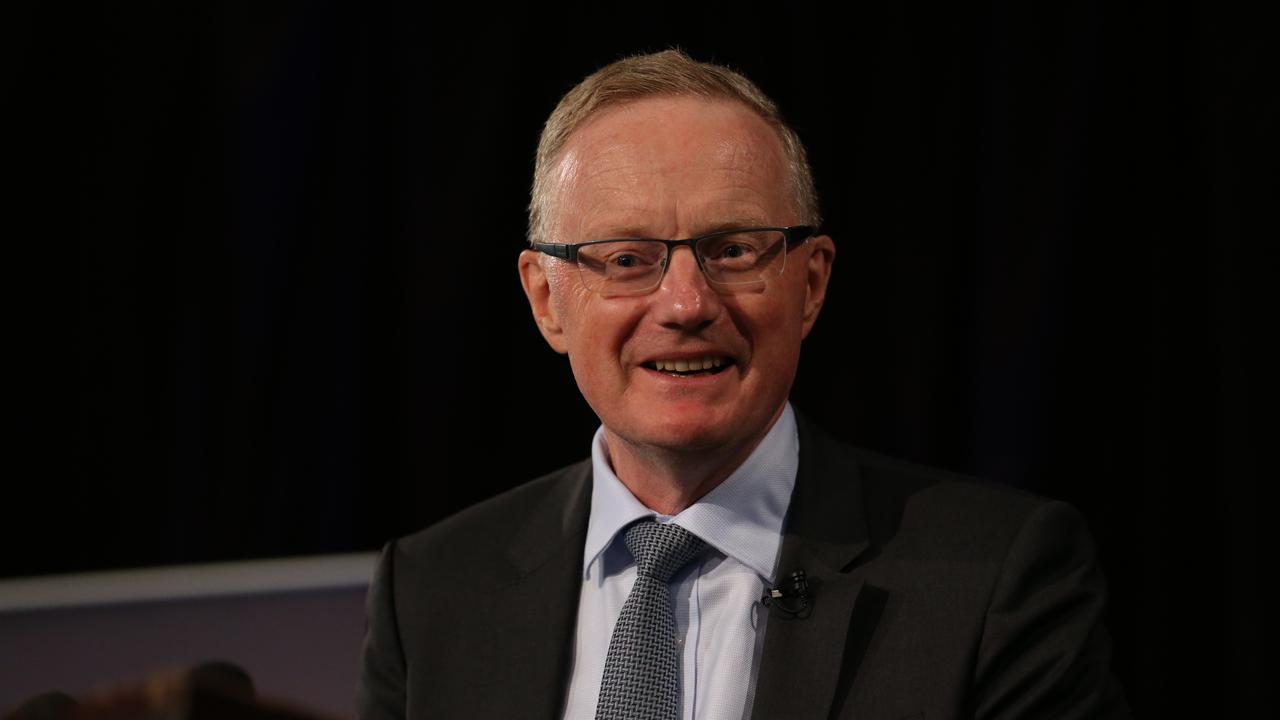RBA interest rates: Rates on hold at record low of 0.25%
Aussies have been told to expect low rates for some time, and the Reserve Bank is sticking to its guns by leaving the cash rate at a record low.
The official cash rate will remain at its current historic low for at least another month after the Reserve Bank voted to keep interest rates on hold at 0.25 per cent today.
At its June meeting this afternoon, the RBA decided to adopt a wait-and-see approach which had been widely expected by economists.
RELATED: What homebuyers grant means for you
RELATED: Government’s $25k homebuyers handout
In a statement, RBA governor Philip Lowe said the decision was made as the global economy experienced a “severe downturn” as countries tried to contain the coronavirus.
“Many people have lost their jobs and there has been a sharp rise in unemployment,” Dr Lowe said.
“Over the past month, infection rates have declined in many countries and there has been some easing of restrictions on activity. If this continues, a recovery in the global economy will get under way, supported by both the large fiscal packages and the significant easing in monetary policies.
“Globally, conditions in financial markets have continued to improve, although conditions in some markets remain fragile. Volatility has declined and credit markets have progressively opened to more firms. Bond rates remain at historically low levels.”
Dr Lowe said the Australian economy was going through a “very difficult period” and was experiencing “the biggest economic contraction since the 1930s”.
“In April, total hours worked declined by an unprecedented 9 per cent and more than 600,000 people lost their jobs, with many more people working zero hours. Household spending weakened very considerably and investment plans are being deferred or cancelled,” he said.
“Notwithstanding these developments, it is possible that the depth of the downturn will be less than earlier expected. The rate of new infections has declined significantly and some restrictions have been eased earlier than was previously thought likely. And there are signs that hours worked stabilised in early May, after the earlier very sharp decline. There has also been a pick-up in some forms of consumer spending.
“However, the outlook, including the nature and speed of the expected recovery, remains highly uncertain and the pandemic is likely to have long-lasting effects on the economy. In the period immediately ahead, much will depend on the confidence that people and businesses have about the health situation and their own finances.”

Dr Lowe previously ruled out a move towards negative interest rates, and has insisted rates will remain at low levels for the foreseeable future.
“I said previously that it was extraordinarily unlikely that we would have negative interest rates, and there’s been no change to that thinking,” Dr Lowe said in May.
Frank Uhlenbruch, investment strategist in the Janus Henderson Australian Fixed Interest team, said both the US Federal Reserve and the RBA had largely ruled out the prospect of negative interest rates, with “the RBA particularly noting that the cost of such a regime outweighed the benefits”.
“Instead, while they both saw scope for further forward guidance and yield curve control measures, the most powerful policy tool going forward was fiscal policy. The RBA has warned of the risks of removing fiscal support too early and that more fiscal easing maybe needed to restore confidence,” he said.
“Given such an outlook and the damage that lockdowns are doing to the economy’s potential growth rate, we look for a low rate regime to persist for many years.
“We see scope for some flattening at the longer end of the yield curve given the size of output gaps and central banks’ desire to create fiscal space for governments by keeping yields low via unconventional policy measures.”
But while Australia’s official cash rate remains on hold, financial comparison website Rate City has revealed rate cuts keep coming from the banks for new home loan customers, with 75 per cent of new customer rates being cut last month.
RateCity.com.au research director Sally Tindall said while the cash rate was unlikely to move in the near future, some home loan rates could drop further as the banks battle it out for new business.

“The big four banks have probably exhausted their capacity to cut fixed rates. Now what we’re seeing is challenger banks trying to outbid them to attract new customers,” she said.
“As a result, rates could fall a fraction further, but they’re unlikely to fall far.
“While the majority of new customer rate changes over the past month were cuts, three-year fixed rates have been the exception, with almost the same number of hikes as cuts.
“In March and April, we saw a handful of non-bank lenders put record low three-year fixed rates on the table but it was clearly unsustainable. Since then, they’ve had to hike rates, which could be a sign we’ve hit the bottom in this category.”
Meanwhile, this month’s Finder RBA Cash Rate Survey found the overwhelming majority of economists surveyed wanted to see the government’s JobKeeper wage subsidy remain in place or be extended beyond the current September cut off date to aid the struggling economy.
Finance expert Noel Whittaker of Queensland University of Technology (QUT) said he is pessimistic about the economy once the government money stops flowing.
“We are living in most uncertain times. In September when the stimulus payments stop, and the loan holidays stop, things may get very bad,” Mr Whittaker said.
And Christine Williams of Smarter Property Investing said the 10-15 per cent unemployment rate won’t snap back for a while.
“Once we are in full swing, those who want to return to the workforce will, those that don’t, won’t. This will lead to an unnatural unemployment percentage for a couple of years,” Ms Williams said.




